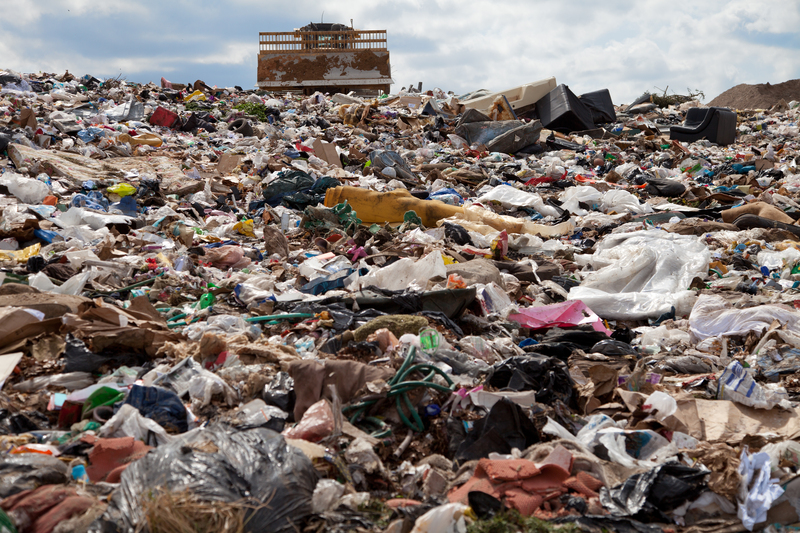Understanding the Right Way to Dispose of PPE Waste
In today's world, the widespread use of Personal Protective Equipment (PPE)--such as masks, gloves, gowns, and face shields--has become integral in safeguarding public health, particularly during health crises like the COVID-19 pandemic. However, while PPE has played a crucial role in controlling the spread of infections, disposing of PPE waste properly has emerged as a significant environmental and public health concern. In this comprehensive guide, we delve deep into the correct methods for PPE disposal, why it matters, and best practices for individuals and organizations.

What Is PPE Waste?
PPE waste refers to discarded personal protective equipment such as:
- Single-use face masks
- Disposable gloves
- Gowns and aprons
- Face shields and goggles
- Other items designed as barriers to infectious materials
Why Is Proper PPE Waste Disposal Important?
1. Preventing Infection Transmission
Discarded PPE materials can be contaminated with bacteria, viruses, or other pathogens. If not disposed of correctly, these infectious agents can spread to others--potentially causing new outbreaks, particularly among waste handlers and cleaning staff.
2. Protecting the Environment
Much of the PPE in use today is made from plastics and synthetic fibers, which do not decompose easily. Improperly disposed PPE can end up in landfills, oceans, and waterways, contributing to pollution, choking wildlife, and contaminating food chains.
3. Legal Compliance and Community Safety
Authorities and public health organizations have set strict regulations on the proper disposal of PPE waste to prevent disease spread and environmental hazards. Non-compliance can lead to legal penalties and damage community well-being.
Types of PPE Waste and Their Disposal Methods
General or Household PPE Waste
This category includes PPE items used by the general public in non-clinical settings such as homes, workplaces, and public venues.
- Used masks and gloves: Should not be thrown into public litter bins or recycling containers.
- PPE with food residues: Might attract animals if left outdoors, creating additional risks.
Disposal Method:
- Remove PPE carefully without touching the outside surface.
- Place items in a dedicated plastic bag.
- Tie the bag securely and place it inside a general waste bin, not a recycling bin.
- Wash hands thoroughly with soap and water afterwards.
Pro tip: Double-bagging protects waste workers from accidental exposure.
Medical or Clinical PPE Waste
Medical facilities, testing centers, and care homes generate hazardous PPE waste that might be contaminated with bodily fluids or infectious agents.
- Masks, gloves, face shields, and gowns from patient care areas
- Items used in laboratories or test centers
Disposal Method:
- Dispose of immediately into color-coded (often yellow or red) hazardous waste bins, per local regulations.
- Bags are sealed and transported by authorized medical waste handlers.
- The waste is usually treated by incineration or autoclaving to destroy pathogens before landfill disposal.
Never throw medical PPE waste into household bins. Always follow workplace protocols for PPE disposal.
PPE Waste from Industrial and Commercial Settings
Workshops, factories, and commercial buildings may use PPE for dust, chemicals, or routine cleaning.
- Respirators and goggles from construction or painting work
- Disposable suits and shoe covers in industrial settings
Disposal depends on contamination risk:
- Non-hazardous PPE can go to general waste (after securing in a plastic bag).
- Chemically contaminated PPE requires hazardous waste collection and safe storage in designated containers.
Eco-Friendly Alternatives for PPE Disposal
As concern about PPE waste disposal mounts, eco-conscious solutions are gaining traction. Here are a few promising approaches:
- Reusable PPE: Where appropriate, use washable masks and gowns that can be sanitized and reused, reducing single-use plastic waste.
- PPE recycling: New initiatives offer specialized recycling of face masks and gloves (e.g., melting plastics for construction materials).
- Biodegradable PPE: Several companies now produce eco-friendly masks and gloves made from plant-based or compostable materials.
Note: Never recycle used PPE in standard household recycling bins, as they are often contaminated and can harm recycling workers and machinery.
Best Practices for Safe and Responsible PPE Waste Disposal
For Individuals
- Always remove PPE carefully to avoid touching contaminated surfaces.
- Bag PPE waste before placing it in the trash.
- Do not throw PPE into public spaces or flush it down the toilet.
- Educate family members about the risks of improper disposal.
- Wash hands or use hand sanitizer immediately after handling PPE waste.
For Businesses and Organizations
- Install clearly marked PPE disposal stations around the workplace, especially at entrances, exits, and restrooms.
- Train employees in proper donning, doffing, and disposal techniques, emphasizing the importance of following protocol.
- Regularly empty PPE bins and replace liners to prevent overflow and contamination.
- Comply with local and national regulations on hazardous and infectious waste management.
- Explore partnerships with specialized PPE recycling programs if feasible.
Challenges and Solutions in PPE Waste Management
Common Issues
- Lack of public awareness about safe disposal practices
- Limited recycling infrastructure for contaminated PPE
- Overflowing bins in public spaces
- Environmental hazards from improper disposal
Proposed Solutions
- Wider dissemination of public service announcements about PPE waste disposal
- Increased investment in PPE recycling technology
- More stringent penalties for littering PPE
- Implementation of deposit-return incentives for safe return and disposal of PPE in high-usage sectors
Key Regulations Guiding PPE Waste Disposal
Adhering to PPE waste management guidelines is essential. Some notable guidelines include:
- World Health Organization (WHO): Recommends strict separation and safe handling of PPE waste in healthcare settings.
- Centers for Disease Control and Prevention (CDC): Guides businesses on PPE waste segregation and disposal procedures.
- Local and federal waste agencies: Most countries classify medical PPE waste as hazardous and specify color-coded bins and secure collection.
Noncompliance can lead to fines, environmental damage, and increased infection risk.
How to Set Up a PPE Waste Disposal System
Step 1: Identify the Types and Sources of PPE Waste
Survey your home, office, or facility to know where and how much PPE waste is generated.
Step 2: Assign Dedicated PPE Waste Bins
Use color coding and proper signage (e.g., "PPE Only - No Food or Drink") to prevent confusion. Place bins at every entry/exit, near restrooms, and in locker areas.
Step 3: Train Everyone on Proper Use
Organize regular briefings on how to remove and discard PPE without creating a contamination risk. Use posters and infographics as reminders.
Step 4: Ensure Secure Collection and Final Disposal
Work with reputable waste contractors or local authorities to ensure safe and frequent collection. Always double-bag or securely tie bags to reduce contamination.
What Happens to PPE Waste After Collection?
The journey of discarded PPE doesn't end at the bin:
- Medical PPE Waste: Is transported to treatment facilities, sterilized (usually via autoclaving or incineration), and then sent to hazardous waste landfills.
- General PPE Waste: May go to municipal landfills or specialized recycling centers if uncontaminated.
- Recycled PPE: Some programs convert usable plastics and materials into construction materials or fuel.
The Consequences of Improper PPE Waste Disposal
- Public Health Risks: Contaminated PPE can spread diseases to sanitation workers and the community.
- Environmental Damage: PPE plastics pollute land and waterways, threatening wildlife and habitats.
- Legal Penalties: Fines for improper disposal and violations of waste management laws can be severe.
- Negative Community Impact: Littered masks and gloves contribute to urban blight and public distrust.

Frequently Asked Questions About PPE Waste Disposal
Can I recycle my disposable mask or gloves?
No. Standard household recycling facilities cannot process PPE due to contamination risks. Use only specialized PPE recycling programs.
How long should I keep my bagged PPE waste before discarding it?
Ideally, double-bagged PPE should be disposed of immediately. Some health regulations advise waiting 72 hours if the waste is from a quarantined or infected person before placing it in communal bins to reduce infection risk.
Can I compost biodegradable PPE at home?
Only if it's uncontaminated and made from certified compostable materials. Never compost used medical PPE at home.
How can I reduce my PPE waste footprint?
Use reusable PPE whenever safe and practical, and support brands offering eco-friendly PPE options.
Conclusion: Doing Our Part in PPE Waste Disposal
The surge in PPE waste brought about by global health emergencies is likely to remain, making safe and responsible PPE disposal a critical part of our everyday lives. Whether you are an individual, business, or healthcare provider, understanding the right way to dispose of PPE waste helps protect people, wildlife, and the planet.
By following best practices, staying informed about local guidelines, and exploring greener alternatives, we all play a role in curbing pollution and preventing further health risks. Let's make PPE waste management a priority now and for the future.
Remember: The right way to dispose of PPE waste protects us all--today and tomorrow.
